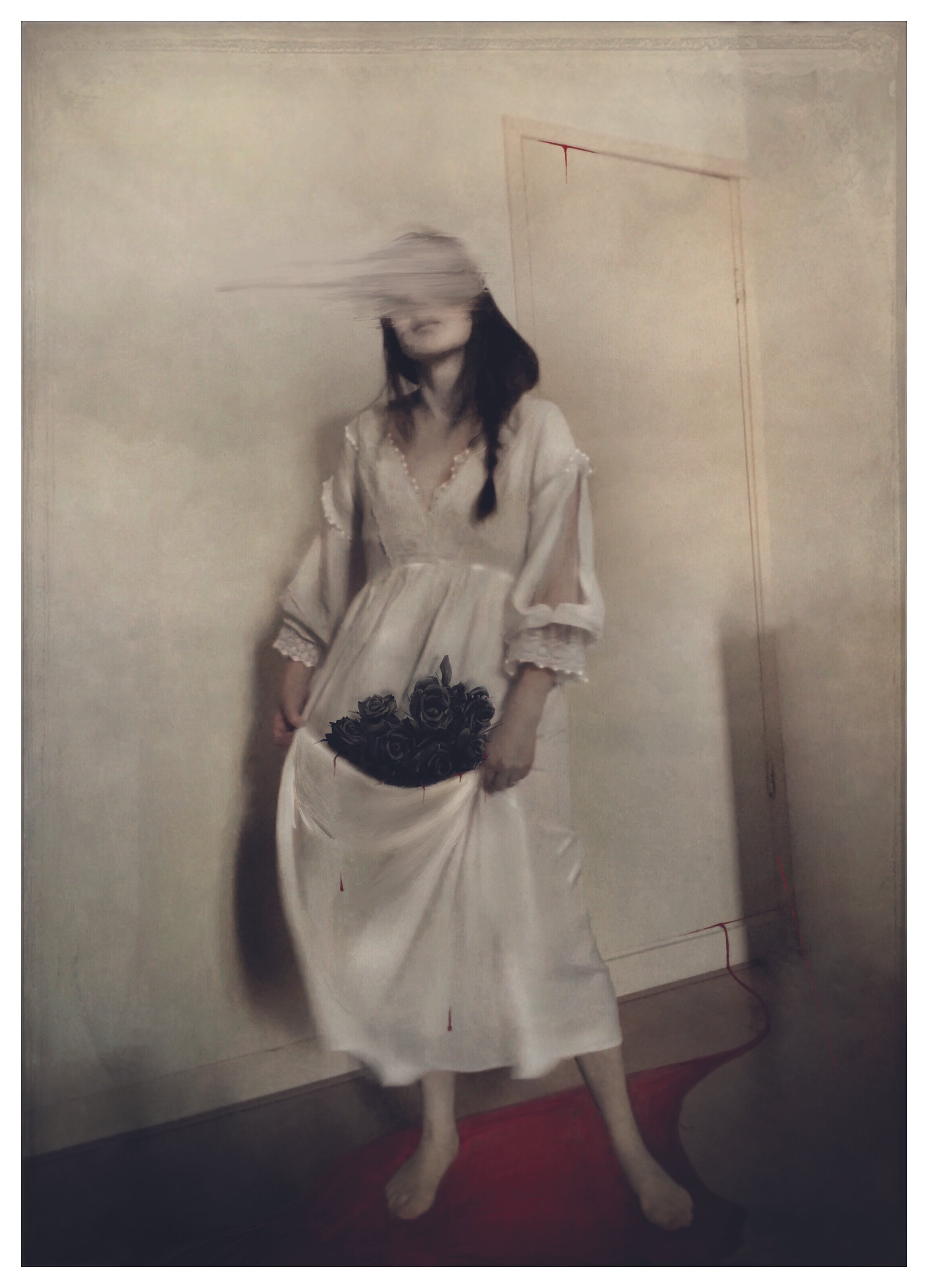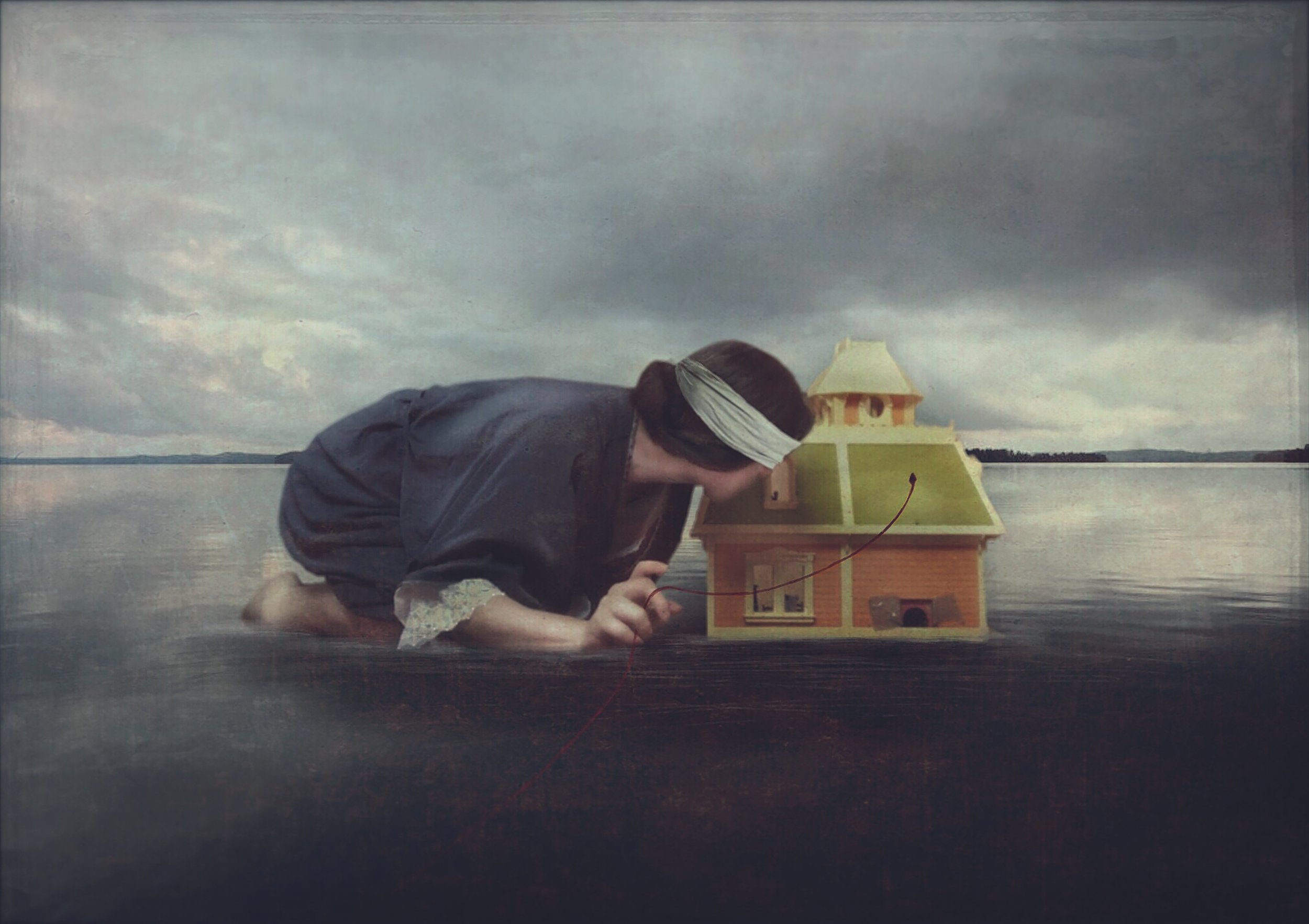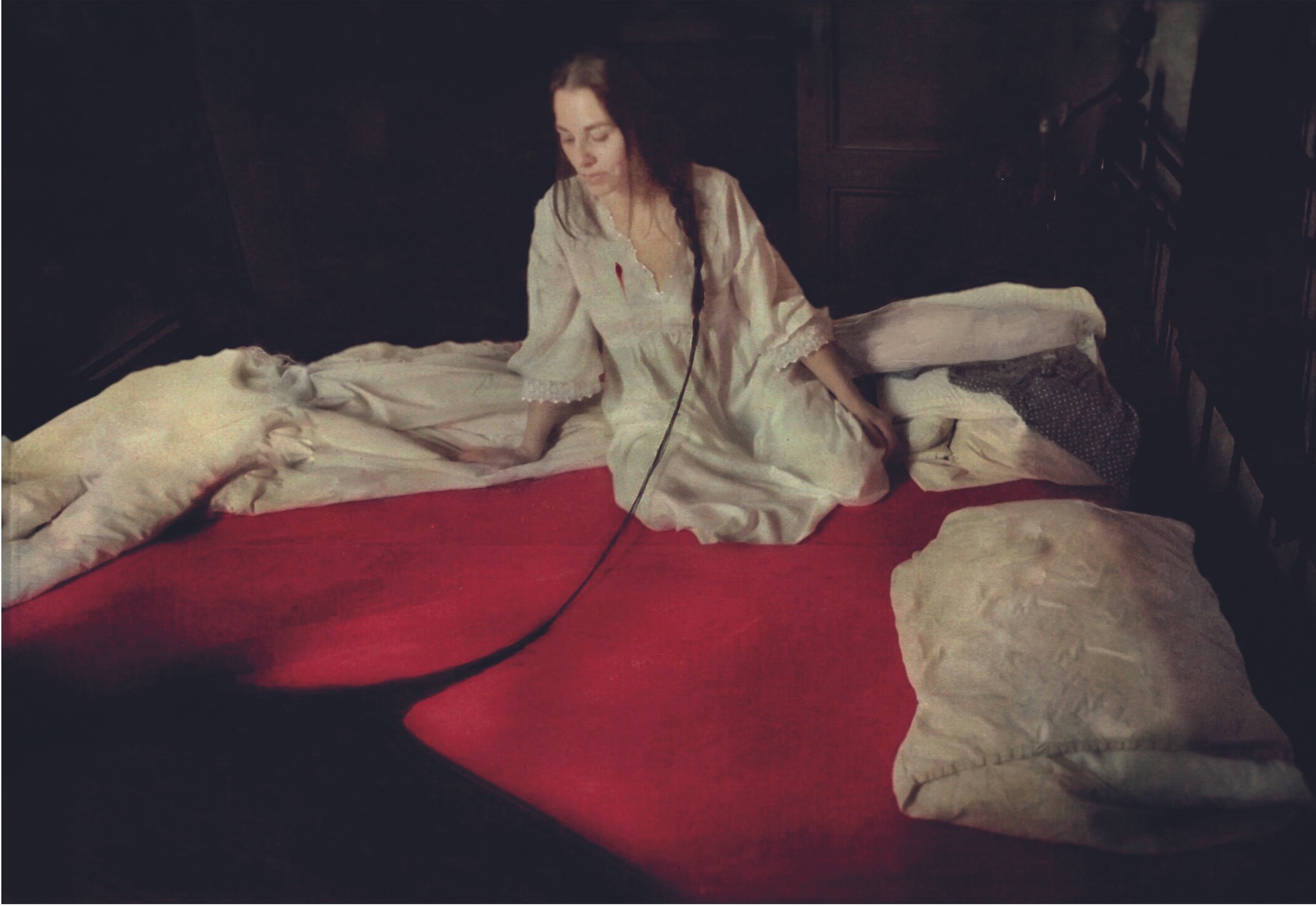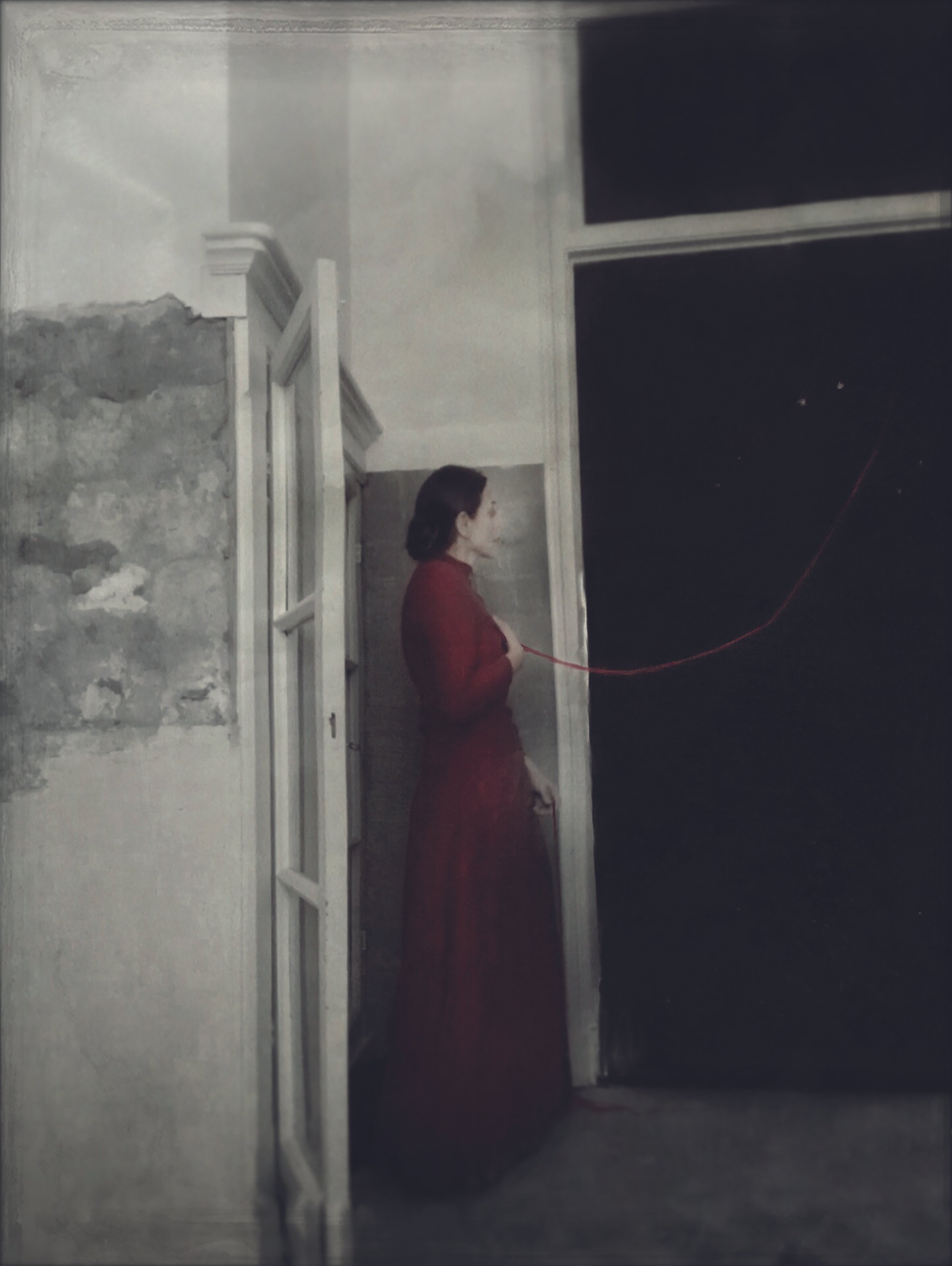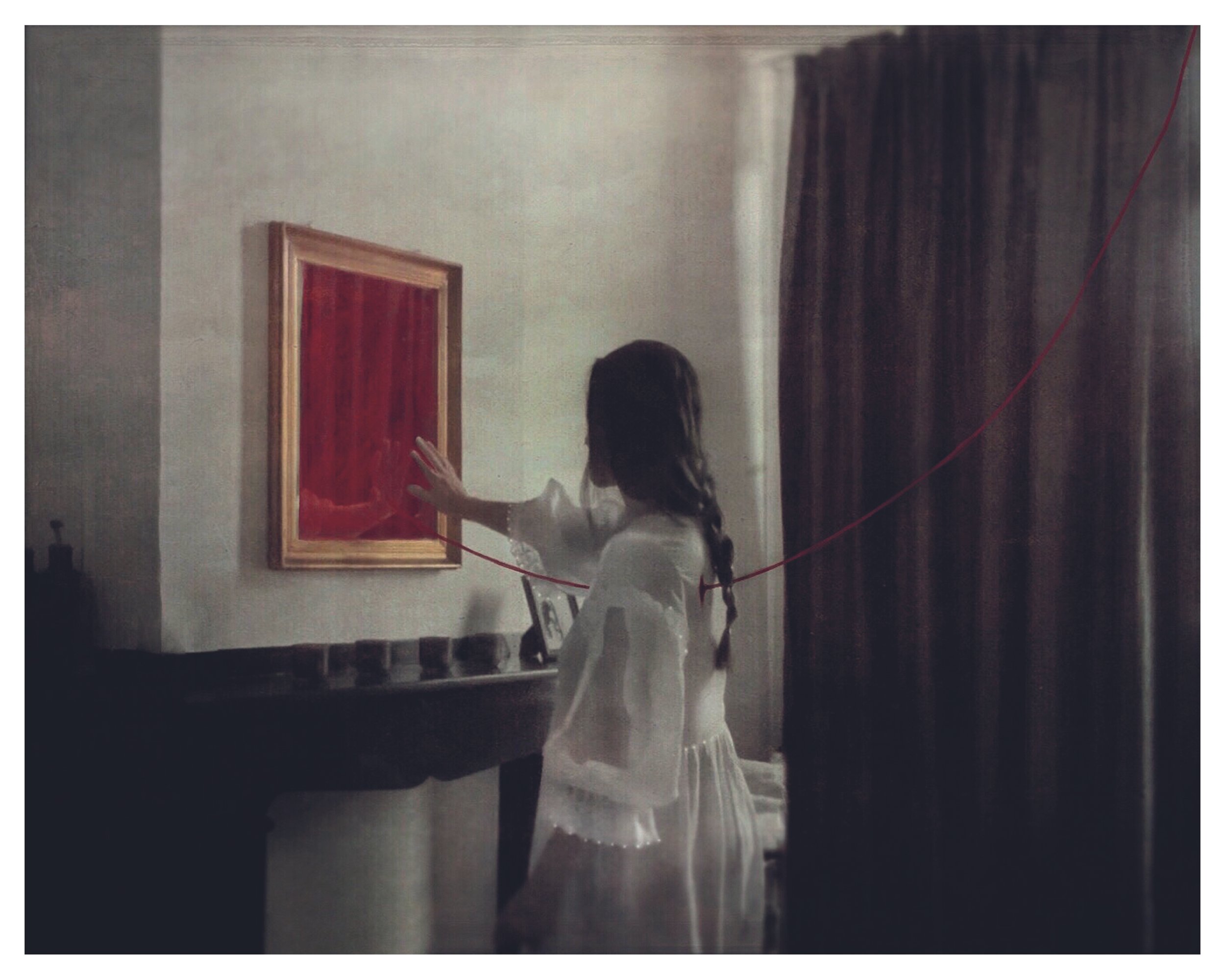Interview
Ana Priscila Rodriguez
Ana Priscila Rodriguez, born 1974 in Mexico City, resides in The Netherlands since 1998. She graduated Cum Laude from the Academy of Fine Arts in Utrecht, The Netherlands in 2006, specializing in Mixed Media and Photography. She has early studies in History and Graphic Design.
Her photographic work is intimate, delicate and confronting. With her images she attempts to create a relatable shore for the emotional and psychological human experience. Every image is a window to a story using photography as a medium to create visuals attached to a feeling or an emotion where the viewer fills in the blanks with their own visions. The complexity of the texture and layers in her photographic work creates the illusion of an old oil painting in each of her works, giving a sense of dark melancholy, romance and drama with a tone of classic Baroque. More than a self-portrait, her work evokes everyone’s drama, journey and vulnerabilities. The story starts with her and it is followed by the story of the beholder. Her work, seen as different stories grouped in individual series, is linked usually by the aesthetic of the signature red detail, symbolizing life, pain, the flow and effect of the body and soul experience and ultimately the visual characterization of a living entity interacting with the characters portrayed on the visual stories. The thread is the red carrier of the human experience. Ana Priscila aims to call into the inner portals of the viewer, providing the elements of emotion and confrontation, while leaving the completion of the story to the beholder, to be filled in with their own identification and personal recalling. For the artist, this subtle way of communication and interaction is what bring her stories to live and what allows it to continue inside the heart of “the other.” Ana Priscila has mastered her own hybrid digital mixed media technique, and she produces digital and paper collage work, as well as analogue images. She has exhibited numerous times in The Netherlands, Europe and participated in International festivals. She has also been awarded several honorable mentions and distinctions in diverse international photography competitions.
What is your background and how did you start your journey in the art world?
“I wanted to be an artist since I was a little girl, I remember I could draw and paint since I was very small. Life as an artist is not always easy and as I grew up I knew I had to settle for a less glamorous career choice. So I studied History in University and Graphic Design, which always enabled me to keep searching my pad as an artist. It was only until I moved from my homeland, Mexico, to The Netherlands, when I decided to fully engage myself in pursuing an artist career. Then, I was admitted at the Hoge School voor de Kunsten (HKU) in Utrecht and I graduated as a Visual Artist with a specialty in Photography and Mixed media Art. Since then, life still has thrown me a few surprises, but I have always tried to keep myself close to my creative side. When I suffered a very bad burnout at my last job, I decided to fully chose for what my heart has always aimed for, and so I finally became a full time artist.”
What inspires you?
“Most of the time, I become inspired about my own life story, but my work is not meant to be autobiographic, so I aim to find a link between my story and someone else’s, then they can fill in the blanks with their own perspective and experience. But it’s always been about the Story. People’s stories, memories, the stories that a place can tell, the stories we hear about the world, about beyond this world and the stories from the heart. It is everything contained inside a person, a place, a thought, a memory and wants to be told.”
What themes do you pursue? Is there an underlying message in your work?
“My themes are about life and how life makes us feel. So, it is about the experience of life and the experience of feeling, all by depicting a certain story. My photography is sometimes a bit dark but there is always an aim to pursue a way out, regardless of how dark it may look. Using a detail in red is a common factor in many of my works, it can either appear as a line, a dot, or a random element, however the symbolism of the red goes beyond aesthetic reasons. It symbolizes life, pain, the flow between fragility, strength, survival and ultimately dead, or the end of things following an eternal cycle of transformation and starting something new. Often my work is about the underlying feelings behind our life experiences, and however heavy it may appear, it shows also a continuation and a constant desire to excel from pain, learn and find peace as the life journey goes on.”
How would you describe your work?
“I call my work mixed media photography because I use the help of diverse mediums to achieve a painting-like aesthetic in my images, I recur to figurative, realistic themes with a neo baroque, romantic influence. My work is atmospheric and to some extent also dark while exploring the depths inside the turmoil’s of the heart and the mind. I work best in series and with every series I tell "a story," in this sense my work can also be understood as a sequence of events attempting to recreate the story that needs to be told. The story however is not meant to be understood literally, I do want to create space and uncertainty to the viewer in order to give them the opportunity to fill in the blanks with their own interpretation.”
Which artists influence you most?
“The Symbolists from the 19th century have always had a big impact in my aesthetics, as well as the Pre-Raphaelite school. However when it comes to conceptual photography and self portrait photographers, definitely Francesca Woodman is one of my main influences. When it comes to aesthetics, I find Ellen Rogers work very compelling. The thing is that my work is still having a - most fortunate - identity crisis, as I play between the making of an image as you would do in painting, and the snapping of a photograph, as you would do as a photographer. I just snap pictures of paintings that don't exist.”
“My photography is sometimes a bit dark but there is always an aim to pursue a way out, regardless of how dark it may look.”
What is your creative process like?
“It pretty much starts with a story and the feelings associated to that story. Then it comes the rational part, the practicalities as I decide the ways I would like to tell the story. Sometimes the stories I want to tell are just way too close to my emotional thinking and it may take a while before I can detach from it in order to start thinking in practical terms. There are stories that I was not planning to tell but then suddenly a place or a colour can give me the first ideas of how could this sequence can come to life. Then I need to fully step into the practical thinking and create the footage for the sequences, build the setting, create the atmosphere and draft the final images. In the end, the image may be way different from what my emotional thinking was dictating, but that is why the practical side is so important, is where aesthetics and knowledge such as balance, light, color, composition, structure, texture and size come into place. The success of the image is not only thanks to the strength of the story, but it is the way the story is told what really matters.”
What is an artist’s role in society and how do you see that evolving?
“An artist’s role in society has changed so much with history that it is very difficult today to define that in real time. I believe above all an artist is the voice and the product of their time. They will tell the stories of their moment in whatever shape they decide to do so. As a visual artist who uses photography as a medium I recall the moment when digital manipulation was introduced into photography and how this was hugely discussed among photographers, digital media was considered an element that would corrupt the traditional ways, however, we artists continue to evolve beyond technology and use it in our convenience. Nowadays, there is a big concern about introducing Artificial Intelligence to the art world. I know of many fellow artists who are currently exploring their possibilities with this tool, they are, as well, products of their time as it is A.I, the artist will continue to evolve taking what is available in their environment because their role is to be the voice of their moment. As such, and as technology continues to imitate the human artistic creation, it is our responsibility to remain true to our humanity and true to our capability to comprehend the true human feelings and human problems. It is only through the human experience and perspective that technology can help evolve the best of our creative endeavours.”
Website: www.priscila.nl
Instagram: @anapriscila_rodriguez


